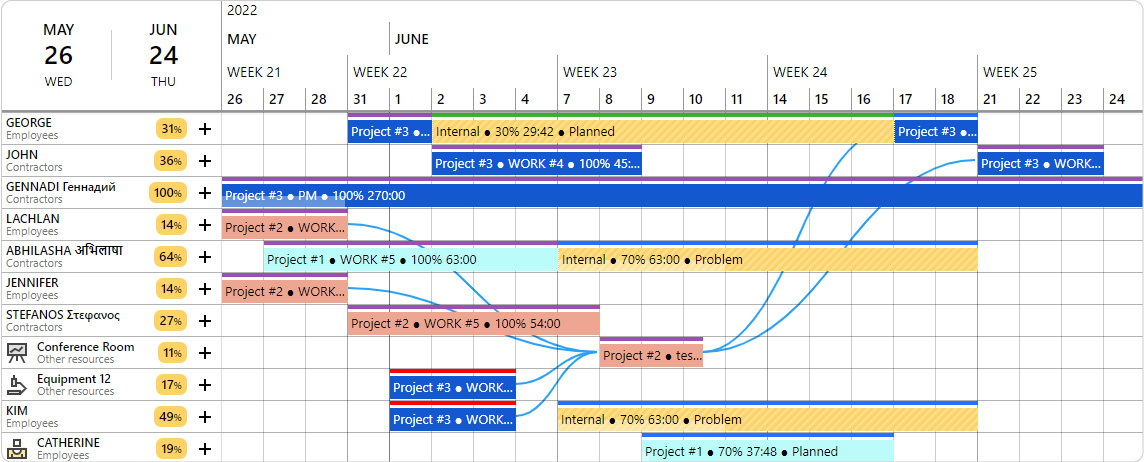Communication is the life force of each and every project and business. Yet not all forms of communication are created equally. And it makes sense that only fully effective communication can enrich the process. Otherwise, you’re only bringing down your projects and organization.
Probably not what you were setting out to do.
As such, in your day-to-day workplace life, you shouldn’t be communicating just for the extra “noise” of it all. It should not be an activity that creates reports, emails and other documentation, but fails to get the right message across. It should not be a series of meetings and discussions where no real decisions are taken.
A dysfunctional communication process will undermine what you are trying to achieve. Whether that is implementing a new IT system, designing state-of-the-art products, or devising a more efficient business process.
So how do you identify and resolve the dysfunctional communication processes that may be taking place within your team or organization? And which are sure to be damaging your projects and reducing the chance of a successful outcome in all areas of a business landscape?
10 Ways to Solve Miscommunication Issues
It’s not great when staff members are speaking to the wrong people. A common problem is that discussions are taking place between different groups of people none of whom have the power to make decisions or change previously agreed decisions. That’s when effective communication really has gone awry! There needs to be a set chain of command and accountability to keep the progress of a project flowing smoothly. This is often termed the “roles and responsibilities” matrix.
It is essential for good communication and for overall project success that everyone involved in a project understand their roles and responsibilities; and those of other team members. It is crucial for situations involving complex change or when teams are geographically dispersed.
Often a RACI matrix is used to associate certain roles with specific deliverables. The RACI mnemonic refers to 4 association types: Responsible, Accountable, Consulted, Informed.
For more on creating a communication plan, check out our article on detailing the process. Or see our infographic on how to get started on a strategic plan.
2. Show Empathy

Managers often lead by example. And as such, the tough love approach is unlikely to bring out the best in people. When an employee is struggling to meet deadlines or deal with the pressure of high-profile tasks, they need “championing” and support. One way to get the best from your workforce and ensure you have a fully-motivated, productive team is to look at your own communication style.
A vital part of effective communication is showing empathy – that means listening (really listening) and trying to understand another person’s point of view and particular situation. If you are failing to do this then there is some measure of dysfunction with your team. And you may not be the authentic leader you thought you were.
3. Provide Training
It is short-sighted not to invest in training for yourself and your employees. Professional training is no longer just the traditional classroom setup, but rather focuses on development of employees to bring out their best attributes. An employee who is continually developing new knowledge in their chosen career will be a motivated employee, and, therefore, an asset to any company.
Professional training can include workshops, masterclasses and bespoke sessions. It can also involve the everyday work tools people use. For example, if the team has recently introduced a new project collaboration tool into their workflow, they have to know how to use it, right?
After all communication is a learned art, and sometimes people just don’t know what to ask. So help them before it’s too late.
4. Use Management Software
When juggling a myriad of tasks, interdependencies and resources; communication between different members of staff can begin to feel like a nightmare without a managed process in place. Nothing beats the human touch. But software that enables companies, departments and teams to keep everyone updated in real-time can be extremely helpful.
Always knowing the current status of a project reminds everyone they are part of a united team working towards a common goal. Even organizations with well-developed communication processes can benefit from some technical help.
Tip: If you’re looking for some resource planning software, we did the leg work for you, and compiled a list of the 5 best tools as well as what features to keep your eyes peeled for.
5. Build Trust
It is no secret that where there is trust and respect – there will also be clear and honest communication. Getting to know your team as individual people will also help you tailor your communication style and add the personal touch.
But this should never be a formulaic event. Really getting to know work colleagues should not be a tick-box exercise. But it should involve a genuine concern and interest in the other human beings you spend every working day with. The company will benefit and so will everyone else, at a personal level that will be reflected in high employee retention rates and high productivity.
Building trust can be made even more difficult when you have thousands of miles between your team. For some ways to improve trust through software, check out our recommendations for some of the best virtual team tools.
6. Bridge Any Gaps
There may be cultural or generational gaps within your team, and these differences will need to be taken into account to build bridges you can successfully cross or at least meet them halfway!
Having suitable social events that involve everyone can be one way to bridge these gaps. As can having a two-way mentoring system where different generations educate and inform each other and where different cultures learn from each other.
An additional advantage of this approach of all learning from each other is that it produces different ideas and solutions to problems. Simply because different generations and cultures view problems differently.
7. Milestones
To complement effective communication plans and processes, you need to set achievable deadlines and interim milestones for all the activities and tasks being undertaken by your team. If there is no accountability for missed deadlines, for example, then how will a manager or leader command respect?
Setting realistic goals with measurable progress and regular status check-ins will help to ensure communication channels remain open and effective.
One caveat is that goals and deadlines have to be realistic estimates of what can be achieved within a certain timeframe. Watch out for sales and marketing teams announcing deadlines simply to suit their own agenda or pressures from competitors; and ensure that proper estimates are calculated for every task.
8. Spend 90% of Your Time Communicating
It is commonly remarked that every successful project manager needs to ensure they are spending 90% of their time communicating. This is to ensure everyone is kept on the same page about progress and status.
The importance of communicating effectively, no matter what the medium, cannot be underestimated. Too little communication can have a seriously damaging effect on outcomes and on team morale. Over communication (if there even is such a thing) can never have a detrimental effect – even though it could be slightly annoying!
Just remember that communication comes in many forms. Gantt charts, Kanban boards, and spreadsheets, can communicate just as much as an hour long meeting. So make sure the mode of communication you choose helps, not hinders.
9. Be Wary of Emotive Language
There is always emotion behind any form of communication: hope, pleasure, anger, stress, pride, jealousy. All are emotions encountered in the workplace.
But, whatever the emotion, there is always room for it to be misinterpreted either due to the personal, in-built “filter” of the recipient. Who may, for instance, be oblivious to implied criticism or, at the other extreme, highly sensitive to any suggestion of criticism.
Where someone’s tone is passive-aggressive, as another example, it can be hard to know what they are really feeling or what they really mean when they communicate. When someone isn’t honest about their own feelings it is impossible for others to interpret them correctly. Supporting people through change is easier if you maintain neutral, effective communication.
Keeping an eye on emotive language is also important if you’re looking to mitigate your employee burnout. Which goes hand in hand with a toxic workplace, higher turnover, and how the team works together overall.
10. Watch Your Body language
A great deal of communication between humans is non-verbal – perhaps more than many people realize. So be very conscious of your body language, especially during times of change and uncertainty. Non-verbal signals may mean you are unconsciously giving a completely different message to the one intended.
So be aware of body language and try to ensure it is consistent with the spoken words. Body language such as facial expressions, gestures, lack of eye contact and even posture can potentially reveal hidden messages in our words. When anxious, angry or stressed we may cross our arms and avoid eye contact even though our voices may be calm or positive in tone. However, most people will detect these signals and the communication will not have the desired effect.
Solving Your Dysfunctional Communication Processes

If you’re noticing dysfunctional communication with your team, give resource management software a try. A clearer workflow of who’s doing what. Visual plans that make it easy to see what’s next. And an application that’s simple to set up and involve the whole team.
Say it with online Gantt charts so you don’t have to.
Sign up for a free 14 day trial of Ganttic (no credit card needed!) and watch your communication improve.